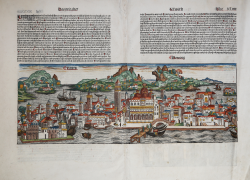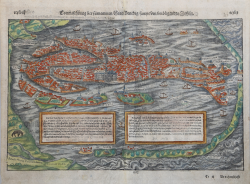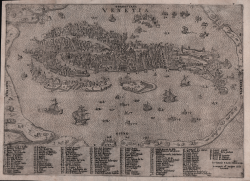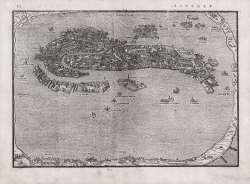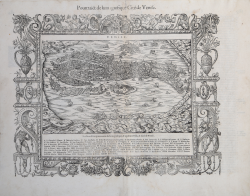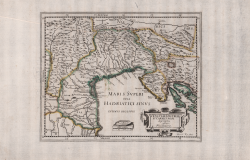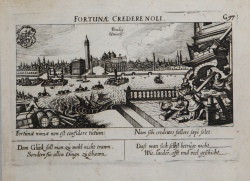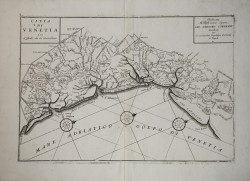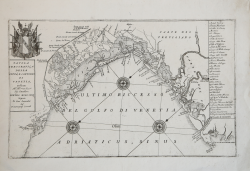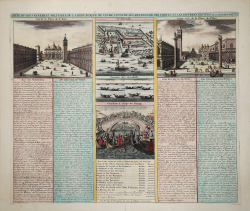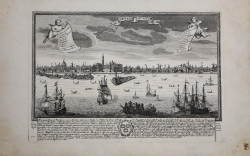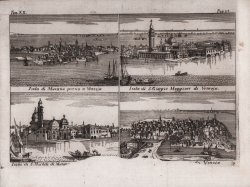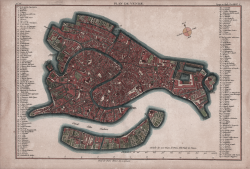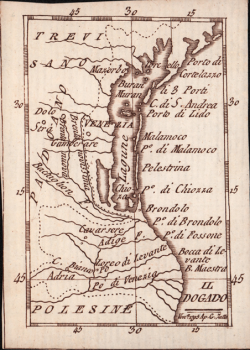Contrafehtung der Furnemmen Statt Venedig / Sampt den umbligenden...
Sebastian Münster
Code:
S17408
Measures:
400 x 325 mm
Year:
1550 ca.
Printed:
Basle
Pourtraict de la magnifique Cité de Venise
Francois de BELLEFOREST
Code:
S47351
Measures:
435 x 340 mm
Year:
1575
Printed:
Paris
Venetiae Histriae et Carnici Agri descriptio auctore Ph. Cluuerio
Philipp CLUVER
Code:
S42546
Measures:
260 x 210 mm
Year:
1659
Printed:
Paris
Fortunae Credere Noli. Venedig. Univers:
Daniel MEISNER
Code:
s23012
Measures:
150 x 100 mm
Year:
1678 ca.
Printed:
Nurnberg
Citta di Venetia con l'Isole che la circondano
Vincenzo CORONELLI
Code:
S40213
Measures:
431 x 280 mm
Year:
1689
Printed:
Venice
Tavola Idrografica della Città, e Contorni di Venetia, Dedicata...
Vincenzo CORONELLI
Code:
S40273
Measures:
435 x 275 mm
Year:
1689
Printed:
Venice
Carte du Government Militaire de La Republique de Venice l'etat de...
Henri Abraham CHATELAIN
Code:
s29440
Measures:
450 x 380 mm
Year:
1708 ca.
Printed:
Paris
Venetia / Venedia
Johann Christian LEOPOLD
Code:
S38991
Measures:
300 x 202 mm
Year:
1725 ca.
Printed:
Augsburg
Isola di Murano presso a Venezia / Isola di S. Giorgio Maggiore di...
Francesco Sesone
Code:
S43010
Measures:
205 x 150 mm
Year:
1759
Printed:
Naples
Plan de Venise
Joseph Jerome de la LANDE
Code:
S40271
Measures:
380 x 265 mm
Year:
1786
Printed:
Paris

